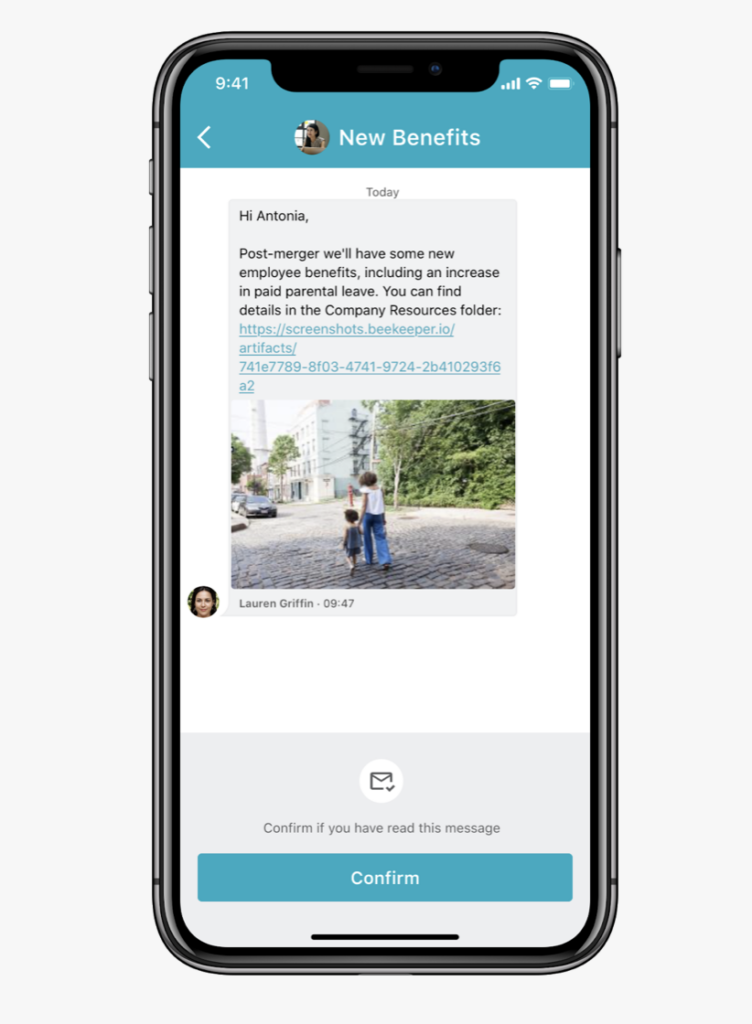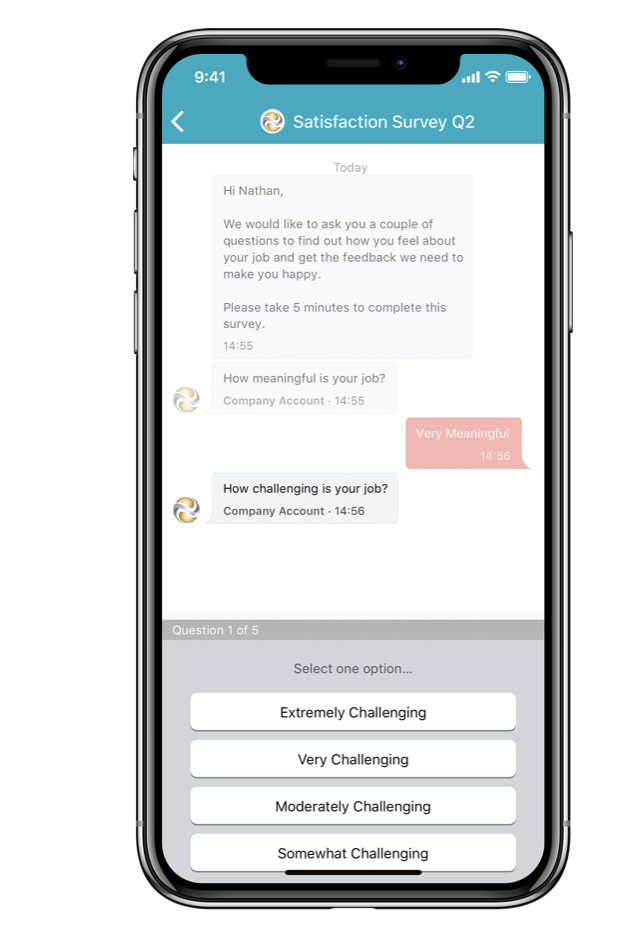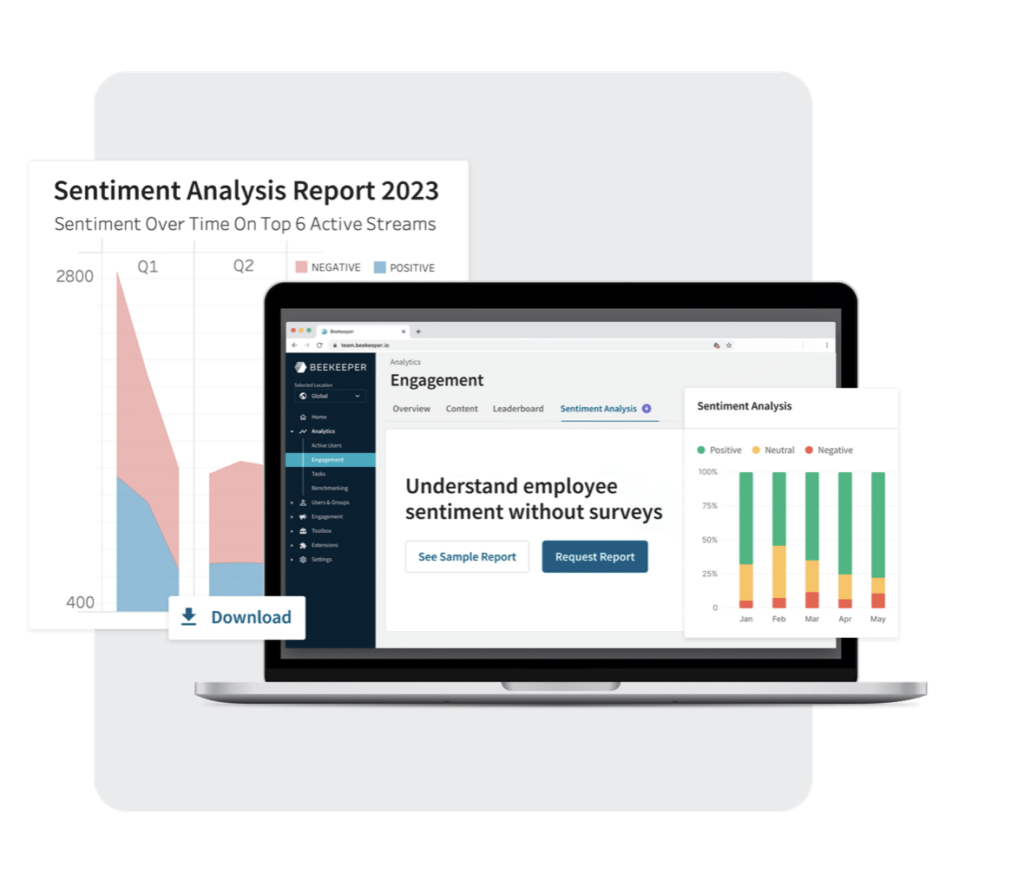8 Proven Strategies to Foster Diversity and Inclusivity in the Workplace

Table of contents
- What Is Workplace Diversity?
- Why Is Workplace Diversity Important?
- 8 Ways to Improve Diversity in the Workplace
- 1. Address Unconscious Bias
- 2. Extend DEI to the Hiring Process
- 3. Acknowledge Intersectionality and Cultural Diversity
- 4. Embrace Employee Resource Groups (ERGs)
- 5. Invest in Mentorship Programs
- 6. Use Employee Surveys for Feedback
- 7. Mix Up Teams
- 8. Craft Policies Reflecting Values
- Promote Diversity and Inclusivity for a Thriving Workplace
Diversity in the workplace is essential to create a thriving business, especially when it comes to employee engagement. Workplace diversity encourages creativity and innovation because every team member, from leadership to frontline employees and mobile workers, brings their own unique backgrounds, experiences, and perspectives to the table.
Learn how a digital workplace can support a diverse workforce with features like inline translation.
Actively cultivating a range of employee engagement and internal communication strategies places diversity at the core of everything you do throughout the workplace, and demonstrates sustained commitment to employee connection for all.
What Is Workplace Diversity?
Workplace diversity refers to the presence of individuals from a variety of backgrounds, cultures, and experiences within a company or organization. It involves embracing and valuing differences, such as those related to gender, race, ethnicity, age, disability, professional background and more.
This inclusion brings a wealth of perspectives that heighten creativity, innovation and operational productivity within the organization.
A diverse workforce:
- Enhances problem-solving abilities
- Drives company performance
- Cultivates a more inclusive environment
Why Is Workplace Diversity Important?
Workplace diversity is crucial for organizations to thrive in today’s global and interconnected world. Here are several reasons why workplace diversity is important:
- Enhances creativity and innovation. When individuals with different backgrounds and perspectives come together, they bring a wide range of ideas, experiences, and approaches to problem-solving. This diversity of thought fosters a culture of innovation, leading to the generation of unique and creative solutions to challenges.
- Improves problem-solving. Diverse teams are more likely to consider multiple perspectives and approaches when addressing complex problems. This broadens the range of potential solutions and increases the likelihood of finding the best one. Different backgrounds and experiences bring fresh insights and alternative viewpoints, enabling teams to think outside the box and make well-informed decisions.
- Boosts employee engagement. When employees feel valued and included, they are more likely to be engaged and committed to their work. In a diverse and inclusive environment, employees feel a sense of belonging, leading to higher job satisfaction, productivity, and retention.
- Reflects a global customer base. As businesses expand their reach globally, it is essential to have employees who understand and can relate to diverse markets and cultures. A diverse workforce can provide valuable insights into different customer preferences, needs, and expectations, enabling companies to effectively serve a diverse customer base.
- Strengthens a company’s reputation. Organizations that prioritize diversity and inclusion are seen as progressive, forward-thinking, and socially responsible. This positive image attracts top talent, enhances brand perception, and can lead to increased customer loyalty.
- Increases financial performance. Numerous studies have shown that diverse companies outperform their homogeneous counterparts. (Like this Linkedin study that found that diverse companies earn 2.5x more cash flow per employee!) This is attributed to the fact that diverse teams bring a wider range of perspectives, which leads to better decision-making, improved problem-solving, and ultimately, greater innovation and profitability.
8 Ways to Improve Diversity in the Workplace
Let’s look at eight ways to improve employee engagement through diversity-focused initiatives and operational processes for your workforce.
1. Address Unconscious Bias
Unconscious biases are the subtle, involuntary assumptions and judgments that we make about others, influenced by their backgrounds, experiences and societal norms. These biases can affect decisions related to hiring, promotions and daily interactions.
Our annual Frontline survey found that 24% of workers quit their last job citing toxic management.
This finding sheds light on the negative impact that management behavior can have on employees’ job satisfaction, well-being, and overall workplace environment. Employees who experience toxic management are likely to feel undervalued, unappreciated, and unsupported in their roles. Over time, these negative experiences can erode their motivation, engagement, and loyalty towards the organization.
Toxic management can arise when unconscious biases come into play, leading to unfair treatment, favoritism, or discrimination towards certain employees or groups. For example, a manager may unknowingly hold biases that lead them to favor employees who are similar to them in terms of gender, race, or background. This favoritism can create a toxic work environment where other employees feel marginalized, overlooked, or unfairly treated.
To tackle this challenge, it’s important to start raising awareness within your team. Consider implementing training sessions that use interactive methods like real-life scenarios and role-playing to illustrate how these biases can influence decision-making.
You should also ensure that there is a clear and open communication channel between managers and their direct reports. Regular check-ins, performance evaluations, and anonymous feedback surveys can provide valuable insights into the employee experience and allow for constructive dialogue between managers and their teams. This creates an environment where employees feel comfortable sharing their concerns and ideas, fostering a sense of trust and mutual respect.
2. Extend DEI to the Hiring Process
To extend diversity, equity, and inclusion (DEI) principles to the hiring process, organizations can implement several impactful strategies.
One key approach is to establish diverse hiring panels or committees that bring together individuals from varied backgrounds and perspectives. This not only aids in reducing unconscious bias but also ensures a fair evaluation of candidates from diverse backgrounds.
Organizations can also adopt blind hiring practices, where personal information like name, gender, and ethnicity are withheld during the screening process, focusing solely on qualifications and skills to mitigate bias and promote a more equitable assessment of candidates.
Incorporating structured interview questions that evaluate candidates based on their competencies and qualifications, rather than subjective opinions, can foster a more objective evaluation process, minimizing the impact of bias.
Actively seeking out diverse candidate pools by collaborating with diverse professional organizations, participating in job fairs targeting underrepresented groups, and utilizing diverse recruitment platforms can broaden reach beyond traditional networks and enhance the likelihood of attracting a diverse array of candidates.
By implementing these strategies, organizations not only improve the diversity of their talent pool but also cultivate an inclusive and equitable hiring process that aligns with broader societal values.
3. Acknowledge Intersectionality and Cultural Diversity
Recognizing the complexity of individuals’ identities and experiences, intersectionality plays a crucial role in understanding diversity and inclusion in the workplace. By acknowledging the interplay of various aspects of identity, organizations can cultivate a more comprehensive approach to fostering inclusivity and equity among employees.
When scholars at the University of Tennessee analyzed 153 intersectionality studies published between 1989 and 2021, they found a consistent pattern of negative experiences for employees with multiple disadvantaged identities.
Discrimination, marginalization, and the poor experience of employees with diverse identities can lead to decreased morale, decreased productivity, and increased turnover rates. It can also damage the organization’s reputation and hinder its ability to attract and retain diverse talent.
To create an environment where individuals from diverse backgrounds feel valued and respected, organizations can implement strategies that promote cultural diversity and understanding. By actively recognizing and celebrating differences through inclusive practices like observing diverse holidays, workplaces can showcase their commitment to embracing various cultural perspectives and traditions.
Organizations can enhance cultural awareness and empathy among employees by offering educational programs that provide insights into different customs, traditions, and worldviews. These initiatives empower employees to develop respect and understanding for one another, ultimately fostering stronger relationships and collaboration within the workplace.
Providing resources and support tailored to employees’ diverse backgrounds is essential for creating an inclusive environment. Establishing affinity groups, employee resource networks, or mentorship programs can offer individuals opportunities to connect with others who share similar experiences or identities, fostering a sense of community, belonging, and empowerment among employees.
By incorporating these practices, organizations can not only promote diversity and inclusion but also create a workplace culture that values and respects the multifaceted identities and experiences of all employees. Embracing intersectionality and actively supporting diversity initiatives can lead to a more inclusive, equitable, and harmonious work environment where every individual feels recognized, appreciated, and empowered.
4. Embrace Employee Resource Groups (ERGs)
According to TopMBA, ERGs are found in 90% of Fortune 500 companies. Many Great Place to Work-Certified companies, including Zillow, and AT&T, have ERGs. Many ERGs start out as a grassroots movement within the organization and eventually snowball into more official, company-sponsored initiatives. If you’re considering starting, expanding, or improving your company’s ERG, here’s how a digital frontline workspace like Beekeeper can help.
Beekeeper may be a technology platform, but at our core, we’re about connecting people, building communities, and creating a more dynamic, inclusive workplace for everyone. As initiatives like diversity, equity, and inclusion (DEI) gain more traction, there are several ways that Beekeeper can be leveraged to support your company’s ERG.
A dedicated ERG stream in Beekeeper allows organizations to easily share resources, educational opportunities, upcoming events, and inclusive stories with the broader company. Creating a dedicated space to celebrate inclusivity shows your employees that the company is making DEI a top priority.
Beekeeper’s confirmation campaign feature helps ensure every employee has not only read critical information, but has also confirmed they’ve been read. Confirmation campaigns can be a great way to let employees know about resources, policies, and updates related to your organization’s ERG.

- Use Labels for Specific Topics
ERGs can encompass a broad range of DEI-related topics and initiatives. It’s a good idea for ERG organizers to create custom labels for different topics so employees can easily filter and search for posts that are most relevant to the causes they care about.
- Create Pulse Surveys
Pulse surveys are a great way to quickly gather information on what topics or initiatives your employees are interested in pursuing for your company’s ERG. Pulse surveys offer a real-time glimpse into topics and ideas your team cares about. For best results, keep your pulse survey short, (no more than 10 questions). Conduct them on a regular basis so you stay up to date on how best to support your workforce.
5. Invest in Mentorship Programs
Hiring a diverse workforce is important, but mentorship programs are a key component of workplace diversity programs to ensure that everyone has the opportunity to advance.
Employees with high potential should be offered mentors regardless of their age, race, sex, or other factors. If a company-sponsored mentorship program isn’t feasible for your company, there are other ways of providing similar opportunities, including:
- Support professional development opportunities by contributing to employees’ continuing education. The more they know the happier they are and the more productive they are as employees.
- Connect employees to outside resource groups, like those dedicated to young professionals and women’s leadership.
- Make sure your leadership team reflects diversity as well by hiring and promoting diverse candidates into those roles.
While these are all great ways to promote workplace diversity, it’s always important to set a good example from the top down. When the C-suite is directly involved in workplace diversity programs or initiatives to improve inclusion, employees take notice.
CEOs in particular can help their company attract the best—and most diverse—talent by being involved in diversity promotion. Prioritizing diversity in the workplace through intentional, focused, employee engagement programs supports recruiting efforts. It improves overall satisfaction, performance, retention, communicates your company’s core values, and bolsters your brand identity and reputation.
6. Use Employee Surveys for Feedback
Surveys provide a platform for employees to voice their opinions, concerns, and suggestions anonymously, creating a safe and open space for honest feedback. By leveraging employee surveys, organizations can gain a better understanding of the experiences and perspectives of their diverse workforce.

Beekeeper (and Beekeeper’s marketplace) is an employee communication platform that enables organizations to easily create and distribute surveys to their employees. With its user-friendly interface and mobile accessibility, Beekeeper allows employees to conveniently complete surveys at their own convenience. The platform also provides robust analytics and reporting features, allowing organizations to analyze survey results and identify trends or areas for improvement.
By leveraging employee surveys through a platform like Beekeeper, organizations can gather the feedback necessary to make informed decisions and implement changes that positively impact the workplace. This not only demonstrates a commitment to listening to employees but also fosters a culture of transparency and continuous improvement.

Pro Tip: AI-Powered sentiment analysis with Beekeeper’s Frontline Intelligence package is a smart way to get the pulse of your team without sending surveys.
7. Mix Up Teams
When teams are diverse, they bring a variety of ideas, insights, and approaches to problem-solving. This diversity of thought can lead to more robust and well-rounded solutions. By mixing up teams, organizations can:
- Break down silos
- Challenge groupthink
- Encourage the exchange of diverse perspectives
Mixing up teams also provides an opportunity for employees to learn from one another. When individuals from different backgrounds work together, they have the chance to share their knowledge, experiences, and cultural practices. This fosters a culture of learning and understanding, promoting inclusivity and cultural competence within the organization.
When we surveyed over 8,000 frontline workers, we found that for 21%, learning and development was their top motivator.
To implement this strategy effectively, organizations can consider:
- Rotating team members periodically
- Forming cross-functional teams
- Creating project-based teams that include individuals from different departments or locations
By intentionally creating diverse teams, organizations can tap into the benefits of diversity, promote learning and understanding, and break down biases and stereotypes. This ultimately leads to a more inclusive and innovative workplace culture.
8. Craft Policies Reflecting Values
When policies are crafted to promote diversity and inclusivity, it ensures that all employees are treated fairly and have equal opportunities for growth and success. This can include policies that address hiring practices, promotion processes, and employee development programs. By removing bias and discrimination from these processes, organizations can create a level playing field for all employees.
During the hiring process an organization may implement a policy that requires blind screening of resumes, where personal information such as name, gender, and ethnicity is removed to eliminate bias. This ensures that candidates are evaluated solely based on their qualifications and skills, creating a fair hiring process.
To address bias and discrimination, organizations can implement a policy that requires clear and transparent criteria for promotions. This can include setting specific performance metrics, skills, and experience requirements that are consistently applied to all employees. By doing so, employees are evaluated on objective factors rather than subjective biases, promoting fairness in promotions.
Organizations can also establish policies that ensure equal access and opportunities for all employees to participate in development programs. This can include offering training and educational programs to all staff members, regardless of their gender, race, or background. By removing barriers and providing equal access to growth opportunities, organizations create an equitable environment for employee development.
Crafting policies that reflect values of diversity and inclusivity also helps to create a safe and respectful work environment. Policies that address harassment, discrimination, and retaliation send a strong message that such behaviors will not be tolerated, and that all employees have the right to work in an inclusive and supportive environment.
These policies also provide a framework for accountability. When organizations have clear policies in place, they can hold individuals accountable for their actions and ensure that there are consequences for behaviors that go against the values of diversity and inclusion.
And clarity matters. We found that having clear team goals was a top motivator for frontline workers.
Promote Diversity and Inclusivity for a Thriving Workplace
Promoting diversity and inclusivity is essential for creating a thriving workplace. By embracing diversity in all its forms, organizations can tap into a wide range of perspectives, ideas, and talents. This leads to increased innovation, creativity, and collaboration. Inclusivity ensures that all employees feel valued, respected, and included, which boosts morale and productivity.
Beekeeper can play a crucial role in promoting diversity and inclusivity by providing a platform for open and transparent communication, fostering collaboration, and amplifying diverse voices. Through features like group chats, surveys, and polls, Beekeeper enables organizations to engage with their employees, gather feedback, and create an inclusive and thriving workplace culture.
About the author
Cristian Grossmann
CEO and Co-Founder, Beekeeper
Cris is CEO and Co-Founder of Beekeeper, an award-winning digital workplace app that digitizes the non-desk workforce in 137+ countries by connecting operational systems and communication channels within one intuitive platform. Beekeeper helps companies increase performance and productivity, enhance employee engagement, reduce turnover costs, and elevate corporate culture. Prior to founding Beekeeper, Cris worked for Accenture on high profile international projects in the field of IT Strategy for the financial and public sectors. Cris studied Chemical Engineering and got his Ph.D. in Electrical Engineering, both at ETH Zurich. Before moving to beautiful Zurich, Cris was born and raised in an entrepreneurial Swiss-Mexican family in Mexico City.








